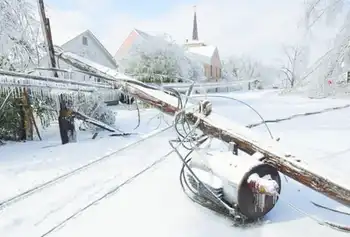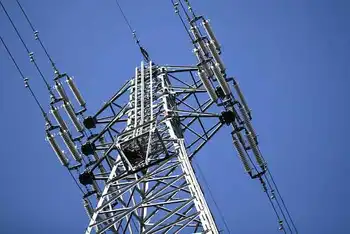Coal being burned more than ever before
Coal is being burned more than ever and is the main culprit in global warming and a host of physical ailments. Just look north from the Tsawwassen ferry terminal at the giant black loading docks at Roberts Bank. They're dedicated to coal and do a roaring business.
What scares me is the incredible enormity, the overwhelming vastness of coal consumption.
Let's start in China, where hundreds of coal-fired factories were closed during the recent Olympics to help clear the air. China is dependent on coal, which produces 70 per cent of its energy. In 2006, China burned a staggering 2.2 billion tonnes of coal, more than the United States, European Union and Japan combined.
To feed its rapidly expanding economy, a new coal-fired plant is added every seven to 10 days, about 40 per year. Few have adequate pollution control equipment, so they spew forth not just carbon dioxide – China is exempt from Kyoto regulations – but also massive quantities of sulphur dioxide, nitrogen oxides, particulate matter, mercury and even radioactivity that cause enormous air pollution, acid rain and a big toll in human health, including 400,000 deaths annually.
Asia's pollution drifts over the Pacific to the west coast cities of North America. But how can we complain when it's our coal they're burning? Asia's air pollution is so vast that scientists have discovered it is altering the global climate, especially over the Pacific.
North America also burns enormous quantities of coal. Our coal plants employ scrubbers and filters so they belch less, but still significant quantities of, pollutants. None of the carbon dioxide is captured; it all enters the atmosphere, that delicate mass of air that all life depends on.
You might think that with all the Kyoto hype, the use of coal in the U.S. and Canada has slowed down. Wrong again. Since U.S. oil production started to decline in the 1970s, the mining and burning of coal has doubled. The U.S. per capita use of coal is triple that of China.
That's why global warming won't go quietly into the night. From 1990 to 2005, world emissions of carbon dioxide increased by 32 per cent, in lockstep with coal production, which increased every year as well, the last three years at seven per cent. Unless we drastically change course, we can kiss Kyoto and its aspirations goodbye.
The British Columbia government brags that our electricity comes from hydro and this a clean province. That's only partly true, for B.C. is an enabler like the person who buys drugs for an addict.
In 2006, B.C. had 12 of Canada's 25 coal mines with six more awaiting approval. In addition, our railways and giant coal terminals at Roberts Bank and Prince Rupert are the arteries through which Saskatchewan and Alberta coal flow to world markets, primarily Asia. In 2006, Canada exported about 28 million tonnes of coal. So, who should take the global-warming rap, the user or the supplier?
The simple but harsh fact is that since coal is abundant and cheap, it is an entrenched source of energy; it won't go away. Vigorous research is underway toward making coal clean, but it's a Herculean challenge. There are two parts to the problem: first, removing carbon dioxide (and many other pollutants) from coal emissions, and second, permanently storing the captured carbon dioxide.
Malcolm Wilson of the Energy Innovation Network, University of Saskatchewan, one of the world's leading experts, said, "Three methods for capturing carbon dioxide from coal are available, but it will take several years to bring them to cost-competitive, full-scale operation."
Dealing with the extracted carbon dioxide is difficult because of the enormous volumes involved. The currently favoured method is to "sequester" it deep underground. Projects are underway in several oil fields where the injected carbon dioxide helps push out oil that would otherwise be difficult to extract. These oil fields, which are perforated with drill holes, are being carefully monitored.
"Everything to date," Wilson says, "indicates that the probability of leakage is very low." This is crucial, since if the carbon dioxide leaks out years later, it would only delay global warming.
The sad truth, however, is that it will take about a decade to bring clean-coal technologies to maturity, and then many more decades to install them in the more than 50,000 (and growing) coal plants around the world. China and India are not even installing existing pollution-control technologies in their coal plants today. Will they install more expensive carbon-dioxide-removal equipment in the future? I fear for my grandchildren.
There's a lot of buzz about peak oil, but for me it's coal that symbolizes what's wrong with the world.
The vast jungles that formed coal in the prehistoric past gobbled up enormous amounts of carbon dioxide, at the same time raising the atmosphere's oxygen content to 21 per cent, thus making life on Earth possible. Now we're hard at work, digging and burning, unceasingly wiping out what took tens of millions of years to make.
It's preposterous that small two-legged humans have become so numerous that we can change nature itself. We're like gods re-sculpting the planet – but this is no Garden of Eden we're creating.
Related News

NDP takes aim at approval of SaskPower 8 per cent rate hike
REGINA - The NDP Opposition is condemning the provincial government’s decision to approve the Saskatchewan Rate Review Panel’s recommendation to increase SaskPower’s rates for the first time since 2018.
The Crown electrical utility’s rates will increase four per cent this fall, and another four per cent in 2023. According to a government news release issued Thursday, the new rates will result in an average increase of approximately $5 on residential customers’ bills starting on Sept. 1, 2022, and an additional $5 on April 1, 2023.
“The decision to increase rates is not taken lightly and came after a thorough review by the…





